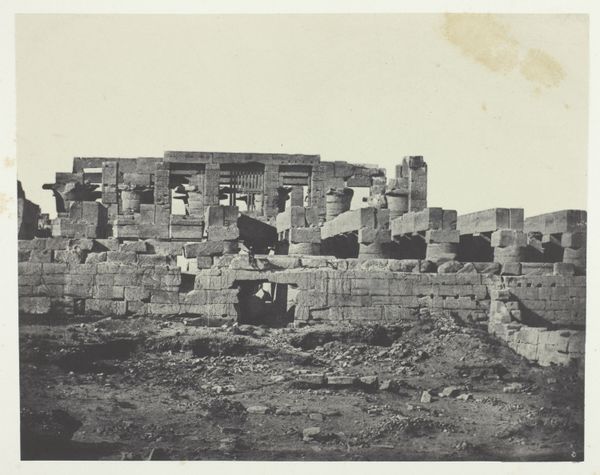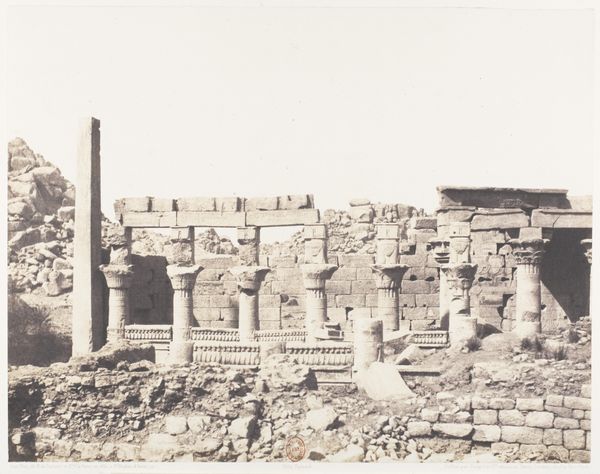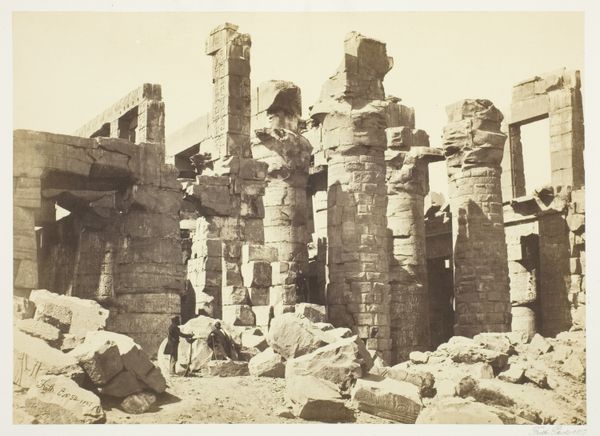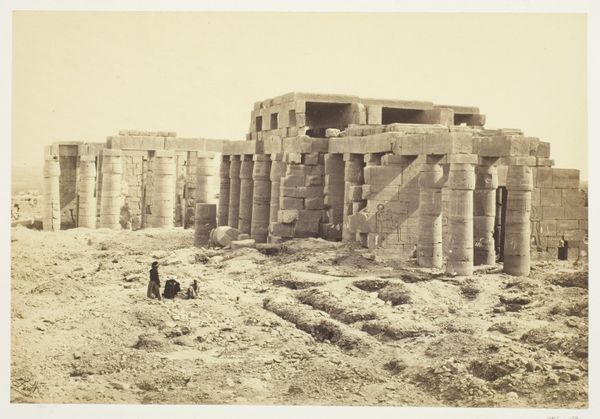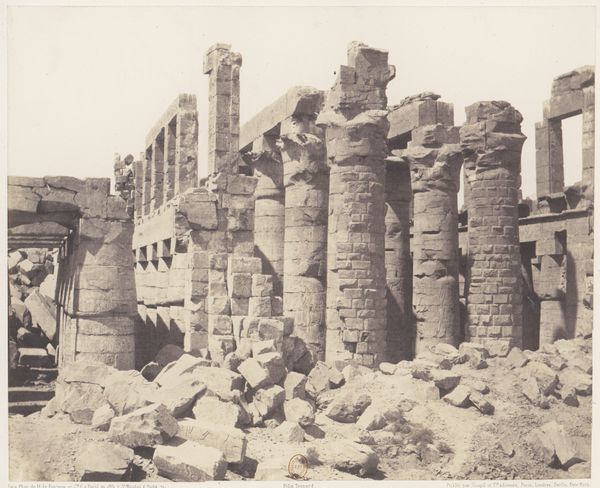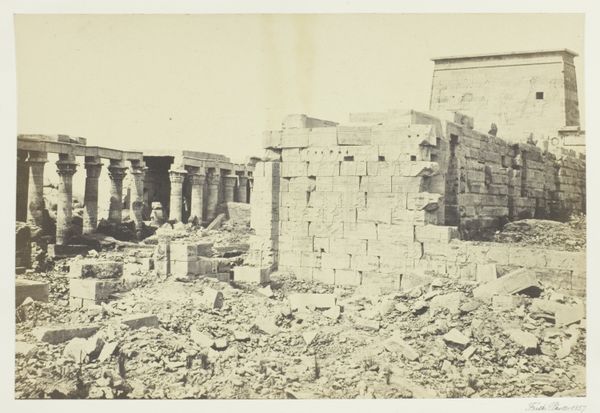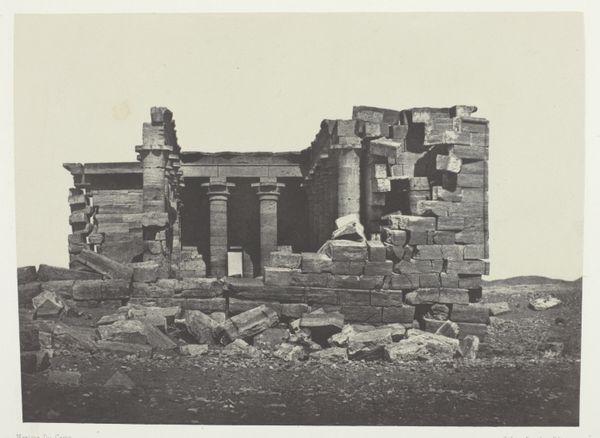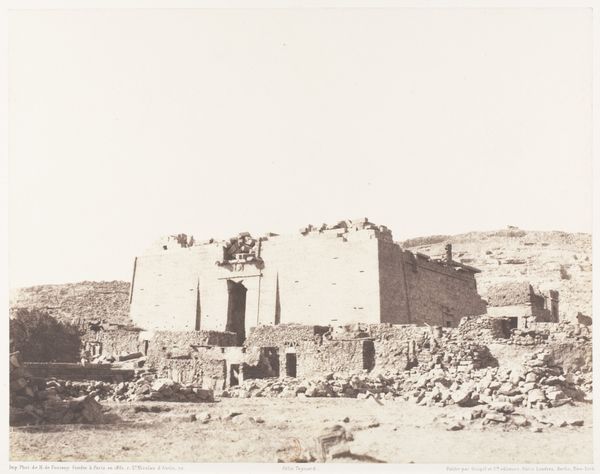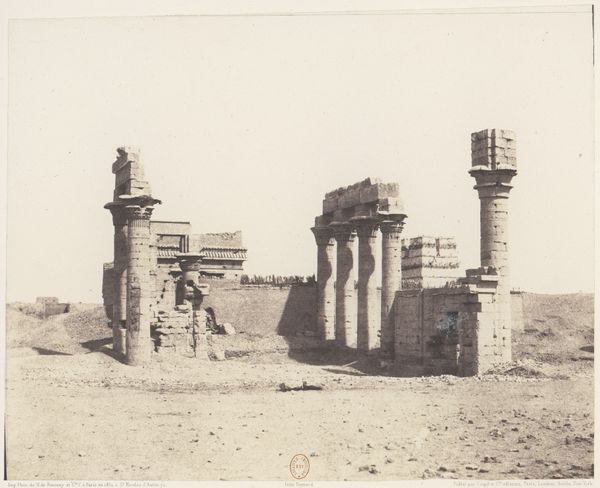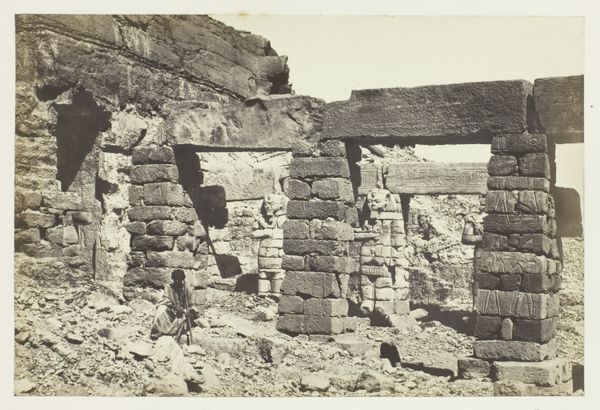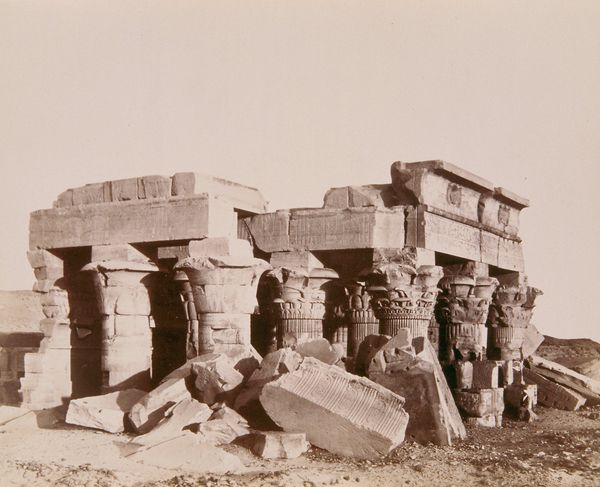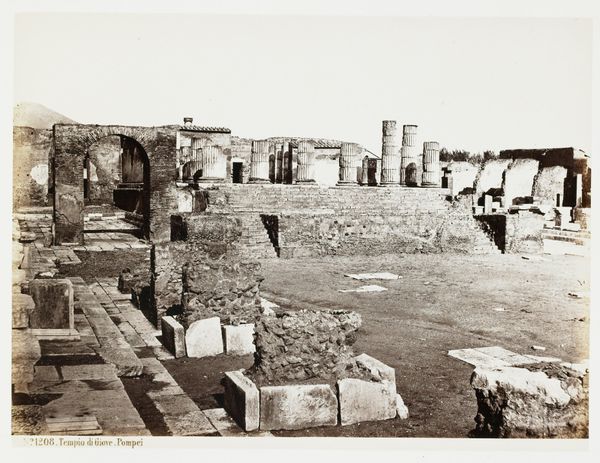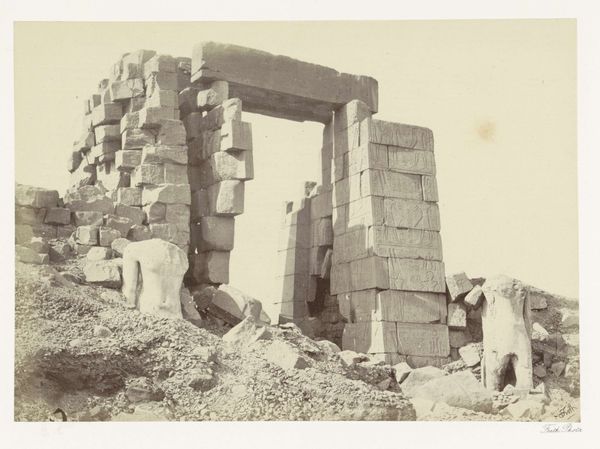
Karnak (Thèbes), Enciente du Palais Vue du Point H 1851 - 1852
0:00
0:00
photography, gelatin-silver-print, architecture
#
landscape
#
ancient-egyptian-art
#
outdoor photography
#
photography
#
gelatin-silver-print
#
architecture
Dimensions: 23.8 x 30.7 cm (9 3/8 x 12 1/16 in.)
Copyright: Public Domain
Félix Teynard made this photograph of Karnak in Thebes using the calotype process. The image renders the ancient stones in tones of brown and gray, emphasizing their rough texture and massive scale. The calotype was an early photographic process using paper coated with silver iodide. Unlike later methods, it produced a negative image, from which multiple prints could be made. The process allowed for a degree of reproducibility that aligned with the burgeoning industrial era. While not as precise as other photographic techniques, the calotype offered a unique aesthetic, softening the details and accentuating tonal variations. Think about the labor involved, not only in building the original temple complex, but also in the photographer’s work. Teynard's choice of the calotype process reflects the era's fascination with capturing and documenting the world, but also, the rise of industrial methods and the commodification of images. It bridges the hand-crafted and the mechanically produced, reflecting broader cultural shifts. By appreciating the materiality and processes involved, we gain a deeper understanding of its historical and social context.
Comments
No comments
Be the first to comment and join the conversation on the ultimate creative platform.
